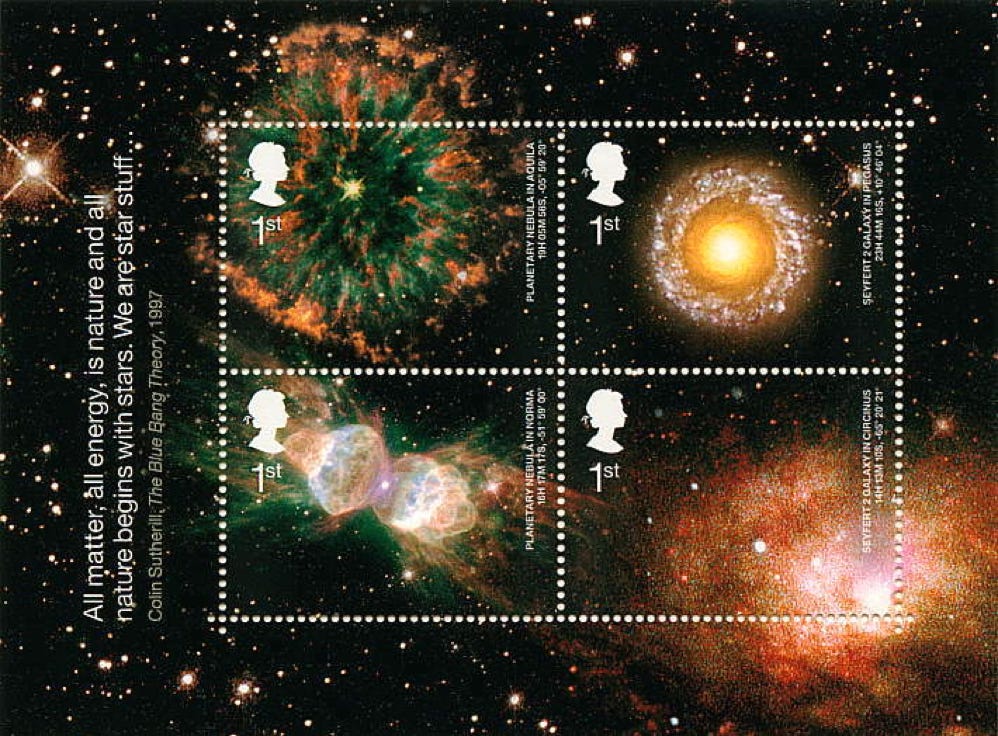2002 Astronomy sheet
Following their off-beam 1999 offerings on Isaac Newton and the total solar eclipse, the Royal Mail entered a new Bad Stamp Millennium with this intended celebration of British astronomical achievement.
The four-stamp sheet is undoubtedly attractive, and the montage of images is cleverly done by Rose Design, but where’s the British connection? All four images were taken by the not-very-British Hubble Space Telescope. The subjects are: top left, planetary nebula NGC 6751 in Aquila; top right, Seyfert galaxy NGC 7742 in Pegasus; bottom left, the Ant Nebula, Menzel 3, a planetary nebula in Norma; bottom right, the central region of an anonymous Seyfert galaxy in Circinus. Why no images taken by any of the British-owned telescopes around the world?
To accompany the stamps, the Royal Mail issued what it termed a ‘prestige’ booklet entitled Across the Universe – A Guide to Outer Space. Produced in the style of a children’s picture book, this included four sheets of stamps, two of which had nothing to do with astronomy.
The first sheet in the booklet consisted of nine of what the Royal Mail terms ‘country definitives’: four 1st-Class and four 2nd-Class English stamps surrounding a Scottish first-class stamp. The second sheet was a block of four of the National Space Centre stamps originally issued in 2000 but with their value altered from 26p to 1st Class. On the third sheet, four golden 1st-Class and four dark-blue European stamps showing the Queen’s head surrounded a label with a photograph of the Jodrell Bank radio telescope. The fourth and final sheet was the Astronomy set shown above (note: a few copies of the booklet have been found with this final sheet printed upside-down. Shortly after they appeared, a London dealer offered me one for £200).
Even though British achievements were strangely absent from the stamps themselves, the booklet was an ideal opportunity to make up for it with glowing descriptions and photographs of British astronomical facilities around the world – but no. Instead, silly errors such as ‘Alpha Centaurus’ for Alpha Centauri, a confusion between Galactic Clusters (better known as open clusters) and clusters of galaxies, and a disappointing choice of images reinforce the feeling of dissatisfaction. Surely someone could at least have supplied up-to-date star distances as measured by the Hipparcos satellite – a mission with strong British involvement, of course. But older figures were used instead.
In all, the stamps were a missed opportunity while the ‘prestige’ booklet was an unfortunate misnomer.
Stanley Gibbons no. MS 2315
